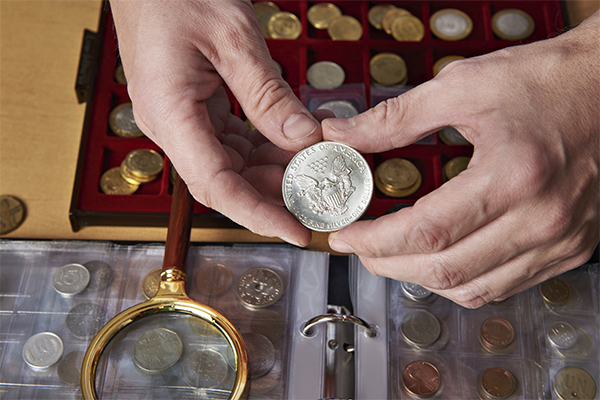
Intending to cash in on the rising prices of gold and silver, people are bagging up virtually every scrap of precious metal that they own and flocking to shops that are willing to buy them. Knowing how to appraise, or get the value, of your gold and silver is vital if you are to get a good deal.
The simplest way in which you can appraise the value of a gold or silver item is by considering its bullion value. This is the value of the raw if it were to be melted and recycled, based on its weight and purity. There are a few basic determinants, however, that can tip the scales. Consider the following points on how to appraise gold and silver.
Gold Appraisal Tips
First, check the weight of your gold item, preferably with a pair of digital scales. The heavier the item, the more valuable it is.
Second, use a jeweler’s lops to examine the gold for a hallmark. This is usually found on the reverse of jewelry, and in some cases on the inside of trinket boxes. Most often, gold is mixed with another metal such as copper, depending on its purpose. Purity markings that determine the carat will help you appraise the value of your gold. It is generally expressed either in parts of 24 or in parts per 1000. In either case, the higher the marking, the higher the value of your item.
Third, consider the item itself – if it is a collectible or a coin, it might have more value than a piece of jewelry. For example, a gold watch by a renowned watchmaker will be appraised above its bullion value.
Silver Appraisal Tips
Start by weight your silver items using a digital scale. The current market value of silver is multiplied by its weight to give you its current spot value.
Silver, too, has a purity marking and most silver items will be marked. For example, Sterling silver is said to be of 92.5% purity and will be hallmarked as.925. The general appraisal of silver is in parts of 1000. The higher the number, the purer the item, and the greater its value. If your silver is not hallmarked, test it with an acid tester. This involves rubbing the silver on a stone rubbing slab and then wiping the stone with nitric acid. The color of the stone changes based on the purity of your silver.
Finally, do a lot of research on the silver item in question. The rarity of the object determines its final price, which could turn out to be much more than the melt value of silver. In the case of old coins, their age can give you a price much higher than the silver they are made from.
In summary, the above points provide a basic outline of how to appraise gold and silver. Keeping these points in mind will help you get the right appraisal and get the best value for these precious metals, irrespective of whether you are buying or selling. It is important to keep in mind that the current market values are constantly changing. Therefore, keep up to date with these changes so that you will be able to get the correct appraisal.
